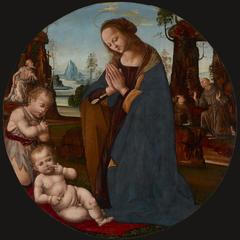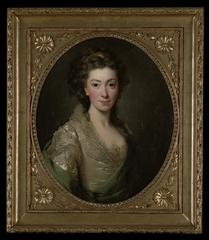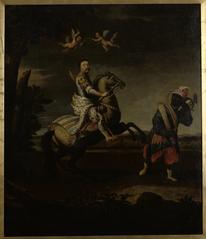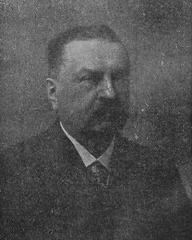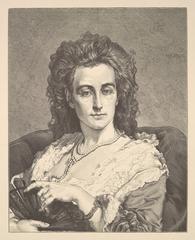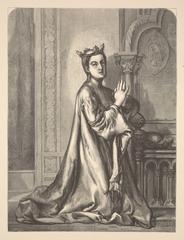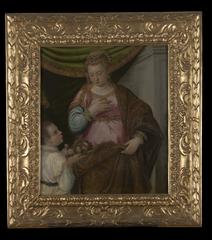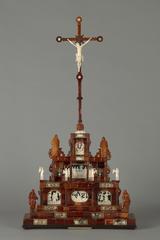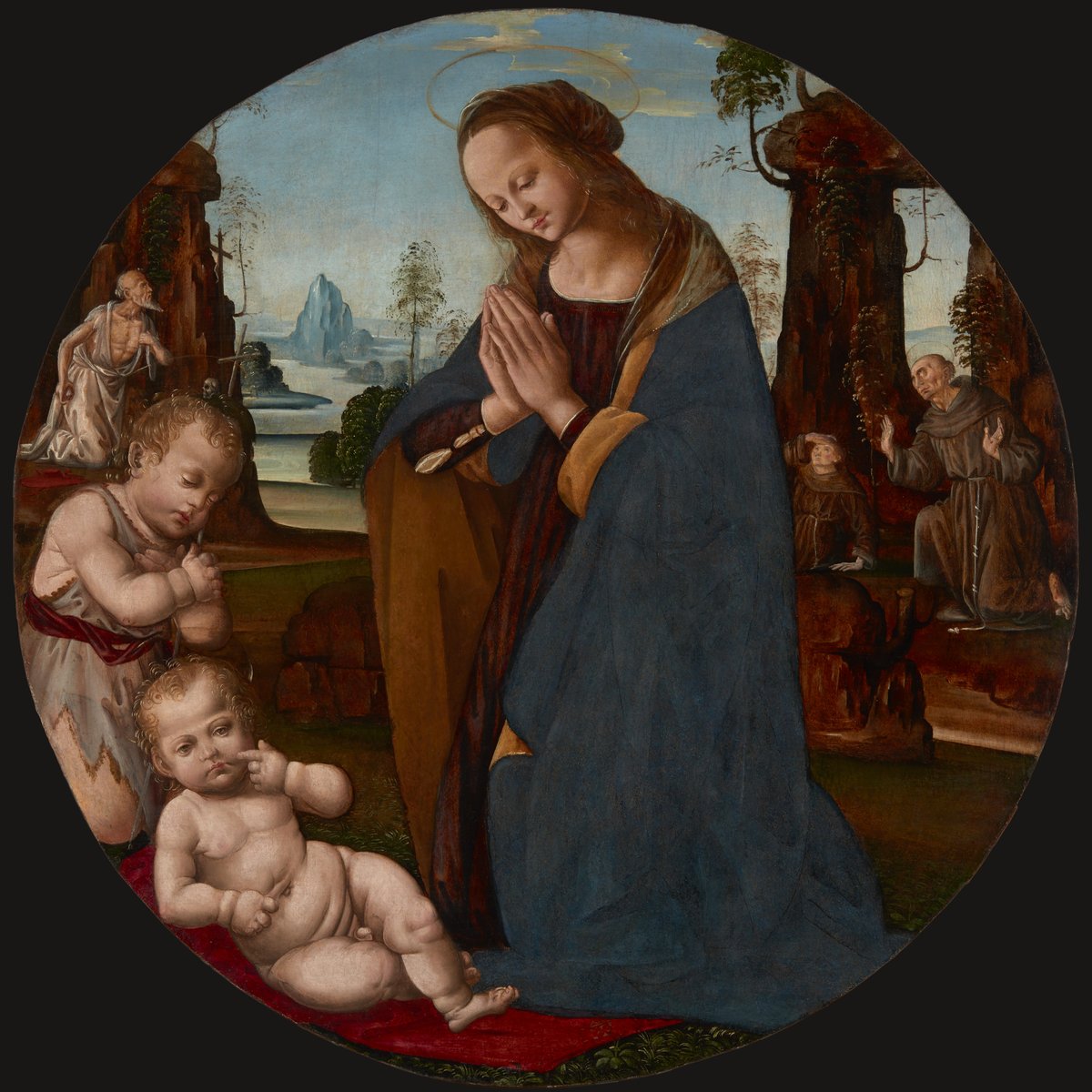
Czartoryski Museum Kraków: Visiting Hours, Tickets, and In-Depth Visitor Guide
Date: 14/06/2025
Introduction
Nestled in the heart of Kraków, the Czartoryski Museum is a cornerstone of Polish cultural heritage and one of Europe’s oldest museums. Established in 1796 by Princess Izabela Czartoryska, its primary mission was—and remains—to safeguard Poland’s national treasures during times of upheaval. Today, the museum stands as a testament to resilience, housing masterpieces such as Leonardo da Vinci’s Lady with an Ermine, Rembrandt’s Landscape with the Good Samaritan, and a wide array of European and Polish artifacts (czartoryski.org; Wikipedia). This comprehensive guide provides detailed information on the museum’s history, collection highlights, visiting hours, ticketing, accessibility, guided tours, and nearby attractions.
Historical Overview
Founding and Early Development (1796–1830)
The Czartoryski Museum’s roots trace to 1796, when Princess Izabela Czartoryska established the “Temple of Memory” in Puławy to protect Polish cultural artifacts following the nation’s partitions. The initial collection featured national relics, trophies from the Battle of Vienna, and European memorabilia, reflecting the Romantic era’s emphasis on history and sentiment (czartoryski.org). Her son, Prince Adam Jerzy Czartoryski, notably expanded the collection with masterpieces acquired during his travels, including da Vinci’s Lady with an Ermine (Wikipedia; its-poland.com).
Turmoil, Loss, and Preservation (1830–1876)
Following the failed November Uprising (1830), the Czartoryski estates were confiscated, and the museum in Puławy suffered significant loss. Most of the collection, however, was preserved by relocating it to Paris’s Hôtel Lambert, where it became a hub for Polish émigré culture. There, Prince Władysław Czartoryski expanded the collection with antiquities, arms, and rare artifacts (Wikipedia; wikiwand.com).
Establishment in Kraków (1876–1939)
Prince Władysław returned the collection to Poland, choosing Kraków as its new home. In 1878, the museum opened to the public in the Czartoryski Palace, further enriched by a significant library donation. The scope now included European paintings, Islamic art, historical manuscripts, and cartography, reinforcing the museum’s cultural significance (its-poland.com; Wikipedia).
World War II and Its Aftermath (1939–1991)
World War II brought devastation and loss as Nazi forces looted the museum, resulting in the disappearance of priceless artifacts such as Raphael’s Portrait of a Young Man. Post-war, the museum was integrated into the National Museum in Kraków, and many items were gradually recovered. In 1991, after the fall of communism, the museum and library were returned to the Czartoryski family (Wikipedia).
Modern Era: Renovation and Rebirth (1991–2025)
Managed by the Princes Czartoryski Foundation from 1991, the museum organized international exhibitions, underwent major renovations (earning the SARP Award in 2020), and in 2016, the collection was donated to the Polish Nation by Prince Adam Karol Czartoryski. The comprehensive restoration culminated in a grand reopening in 2019, offering 26 exhibition rooms within a modernized historic palace (wikiwand.com; mnk.pl).
Highlights of the Collection
Masterpieces
- Leonardo da Vinci’s Lady with an Ermine: One of only four female portraits by da Vinci, this painting is a jewel of European Renaissance art and a major draw for visitors (Wikipedia; krakow.wiki).
- Rembrandt’s Landscape with the Good Samaritan: A rare Baroque landscape, celebrated for its emotional depth (European Traveler).
- Lucas Cranach the Younger: Miniature portraits of the Jagiellonian Dynasty, offering insights into Poland’s royal lineage (krakow.wiki).
- Other Notables: Works by Pieter Bruegel the Elder, Dirk Bouts, Vincenzo Catena, Joos van Cleve, and Andrea Mantegna.
Polish Heritage and Royal Artifacts
- Temple of the Sibyl Memorabilia: National relics, including trophies from the 1683 Battle of Vienna (Karnet Krakow Culture).
- Victory of Vienna Room: Features Ottoman artifacts and a feathered Hussar uniform, with immersive presentations of Polish military triumph (European Traveler).
- Royal Portraits and Polish Nobility: Galleries dedicated to historical figures and the Czartoryski family.
Antiquities and Decorative Arts
- Ancient Art: Egyptian sarcophagi, Etruscan, Greek, and Roman sculptures (guidetoeurope.com).
- Islamic, Far Eastern, and Applied Arts: Decorative objects from the Middle East, China, and Japan.
- Military Collections: Polish winged Hussar armor and weaponry.
- Library and Works on Paper: Rotating displays of prints, manuscripts, and rare books, including works by Albrecht Dürer (European Traveler).
Visiting the Czartoryski Museum: Practical Information
Location
- Address: Pijarska 15, 31-015 Kraków, Poland (mnk.pl)
- Nearby Landmarks: Planty Park, Barbican, Jan Matejko House, St. Mary’s Basilica (introducingkrakow.com)
Getting There
- Public Transport: Trams 2, 3, 4, 5, 12, 13, 14, 15, 24; buses 124, 152, 424, 502, 512.
- On Foot: A 10-minute walk from the Main Market Square.
- Taxi/Ride-share: Drop-off at the entrance.
Visiting Hours
- Monday: Closed
- Tuesday & Thursday: 10:00 AM – 4:00 PM
- Wednesday, Friday, Saturday: 10:00 AM – 7:00 PM
- Sunday: 10:00 AM – 3:00 PM
Confirm current hours and holiday schedules on the official website (culture.pl).
Tickets and Admission
- Standard Adult: 65 PLN
- Reduced: 50 PLN
- Family Ticket: 130 PLN
- Students (7–26 years): 1 PLN
- Children under 7: Free
- Free Admission: Every Tuesday for all visitors (introducingkrakow.com)
- Purchase: Online in advance (recommended) or at the on-site ticket office (krakowtop.org)
Admission covers all exhibitions (Palace, Monastery, Gallery of Ancient Art).
Guided Tours and Audio Guides
- Guided Tours: Available in Polish and English; duration about 90 minutes. Book via the museum or reputable platforms (krakowtop.org).
- Audio Guides: Offered in multiple languages, with large-print options available.
Accessibility
- Wheelchair Access: Most galleries are accessible; some historic sections may be challenging.
- Assistance: Contact the museum in advance for special needs (krakowtop.org).
- Bilingual Signage: Polish and English exhibit descriptions throughout.
Facilities
- Atrium: Ticket office, café, cloakroom, gift shop, restrooms (visitkrakow.com).
- Café: Light refreshments available.
- Gift Shop: Books, souvenirs, and art-related gifts.
- Cloakroom: Complimentary storage for large bags.
Visitor Tips
- Recommended Visit Length: 1.5–2 hours (longer for art enthusiasts).
- Crowd Avoidance: Book early time slots, especially for Lady with an Ermine (krakowtop.org).
- Photography: Non-flash photography allowed unless signage states otherwise.
- Language: Most materials provided in Polish and English.
- Special Exhibitions: Check the website for current events.
Frequently Asked Questions (FAQ)
Q: What are the opening hours of the Czartoryski Museum?
A: The museum is open Tuesday–Sunday, with hours varying by day. Closed Mondays. Always check the official website for updates.
Q: How do I purchase tickets?
A: Buy tickets online for guaranteed entry, or at the museum. Free admission for all on Tuesdays.
Q: Is the museum family-friendly?
A: Yes, with discounts for students and free entry for children under 7.
Q: Are guided tours available?
A: Yes, in multiple languages. Advance booking is recommended.
Q: Is photography allowed?
A: Non-flash photography is generally permitted, but some exhibits may have restrictions.
Q: How accessible is the museum?
A: Most galleries are wheelchair accessible. Contact the museum for assistance with special needs.
Nearby Kraków Attractions
- Planty Park: 90 meters—a scenic green belt encircling the Old Town.
- Kraków Old City Walls & Barbican: 94–134 meters—historic defensive structures.
- Jan Matejko House: 98 meters—former residence of Poland’s national painter.
- St. Mary’s Basilica: 326 meters—famed for its Gothic architecture and vibrant altarpiece (introducingkrakow.com).
Practical Advice
- Arrive early to avoid crowds, especially on free-admission days.
- Expect security checks; large bags must be checked at the cloakroom.
- Refreshments are available on site, but Kraków’s Old Town offers a wealth of dining options.
- Contact the museum ahead for accessibility arrangements.
- Virtual tours and high-quality images are available on the official website for pre-visit planning.
Conclusion
The Czartoryski Museum is a crown jewel of Kraków’s historical and cultural landscape, offering an immersive journey through Polish and European art and history. Its collection, facilities, and location—combined with accessibility and family-friendly services—make it a must-visit for travelers, art lovers, and history enthusiasts alike. Plan your visit by checking updated hours and ticketing options, consider a guided tour for deeper insight, and explore nearby Old Town attractions to enrich your Kraków experience.
For the latest updates, exhibitions, and visitor information, download the Audiala app and follow museum social media channels.
Sources and Official Links
- Czartoryski Museum – Official Website
- Czartoryski Museum – Wikipedia
- Princes Czartoryski Museum | its-poland.com
- Czartoryski Museum Visiting Hours, Tickets & Must-See Krakow Historical Site
- Visiting the Czartoryski Museum in Kraków: Hours, Tickets, and Cultural Highlights | European Traveler
- Czartoryski Museum Visiting Hours, Tickets, and Guide to Kraków’s Historic Site | Introducing Krakow
- Czartoryski Museum | mnk.pl
- Czartoryski Museum Renovation Award | Wikiwand
- The Princes Czartoryski Museum – Karnet Krakow Culture
- Visit Krakow Guide
- Culture.pl
- Guide to Europe – Princes Czartoryski Museum
- KrakowTop.org – Guided Tours
